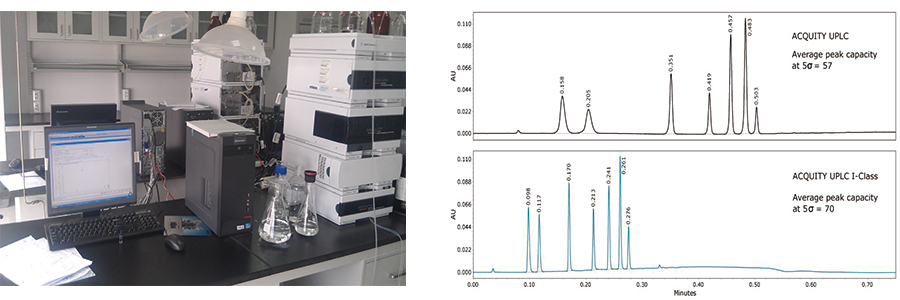Peptides have shown tremendous research and application value in signal transduction of immune function, cell secretion, precursor signal, disease occurrence and treatment.In the process of studying the structure and function of peptides, the determination of peptides, especially the structure determination of long-chain peptides, is a very important and complex work.High purity and single component peptides are the prerequisite to confirm the structure of peptides.
At present, the determination of peptide mainly includes the determination of structure (amino acid composition and content of peptide), and peptide sequencing (amino acid connection sequence) .Omizzur can currently provide the following test reports:
High performance liquid chromatography is widely used to analyze almost all organic compounds, high polymers and biological samples. At present, more than 80% of the known compounds need to be analyzed by HPLC.
In recent years, with the rapid development of bioengineering and life science, higher requirements are put forward for peptide determination. Omizzur Peptide used Micro-Column HPLC,Multidimensional HPLC, LC-ESI-MS technologies to provide a powerful tool for the identification and analysis of proteins and peptides.
√ Improve sensitivity:Combined with Atomic absorption spectroscopy(AAS), Atomic fluorescence spectrometry(AFS),ICP-MS, ICP-AES, mainly for morphological analysis
√ Combined with mass spectrometry, can meet the requirements of separation and structure determination meanwhile.
√ Combined with high performance liquid chromatography, called tandem chromatography to enhance resolution:
√ Combined with NMR for structure determination

CE(Capillary electrophoresis) and its coupling technology
It is a liquid-phase separation technology, which uses high-voltage electric field as driving force, capillary as separation channel, and according to the difference of mobility and distribution behavior between components in the sample to achieve component separation.
The combination of capillary electrophoresis and laser-induced fluorescence detector(LIFD) provides a fast and sensitive detection method for protein and peptide samples.It breaks through the bottleneck caused by the low detection sensitivity, and makes the analysis sensitivity indicate an order of magnitude. Capillary electrophoresis has fast speed and high sensitivity, which can be used for qualitative, quantitative analysis, separation and purification of samples.
At present, the capillary detector used in Omizzur Peptide is LIFD,ultraviolet, fluorescence and mass spectrometer detector. CE is a useful tool for the separation and characterization of peptides and proteins.
MS(Mass Spectrometry) and its coupling technologies
Mass spectrometry has high sensitivity and rapidity, which is especially suitable for peptide analysis.In recent years, with the development of two kinds of soft-Ionization technologies, electrospray ionization(ESI-MS) and matrix-assisted laser desorption (MALDI), the application of mass spectrometry technology in protein structure analysis has taken a huge leap.
These two analytical techniques make it possible to analyze polar peptide molecules. The detection limit is reduced to fmol level, and the range of molecular weight can be determined as high as 100 000Da. At the same time, the problems of difficult volatilization and gasification of biological macromolecules are solved.
NMR (Nuclear Magnetic resonance)
Nuclear magnetic resonance (NMR) is widely used to analyze the structure and reaction performance of chemical substances, and has developed into an important experimental technology in molecular biology.
NMR is mainly used to verify the micro physical and chemical properties of peptides. It can detect some peptides that can not be detected by X-ray crystallography.With the application of 2D, 3D and 4D NMR, the development of molecular biology and computer processing technology, NMR has gradually become one of the main methods for peptide and protein analysis.NMR can be used to determine the amino acid sequence and the component content of the quantitative mixture which is suitable for the analysis of short peptides containing less than 30 amino acids.
Other common peptide analysis methods
• UV spectrum • Circular dichroism(CD)
• Radioisotope label • FD-MS
• Infrared spectrum • Bioassay
Because of the particularity of peptide drugs, their analytical methods are also diversified. In practice, several methods are used to complement each other.
Copyright © 2020 Omizzur Inc | Terms & Conditions | Privacy Notice | Sitemap